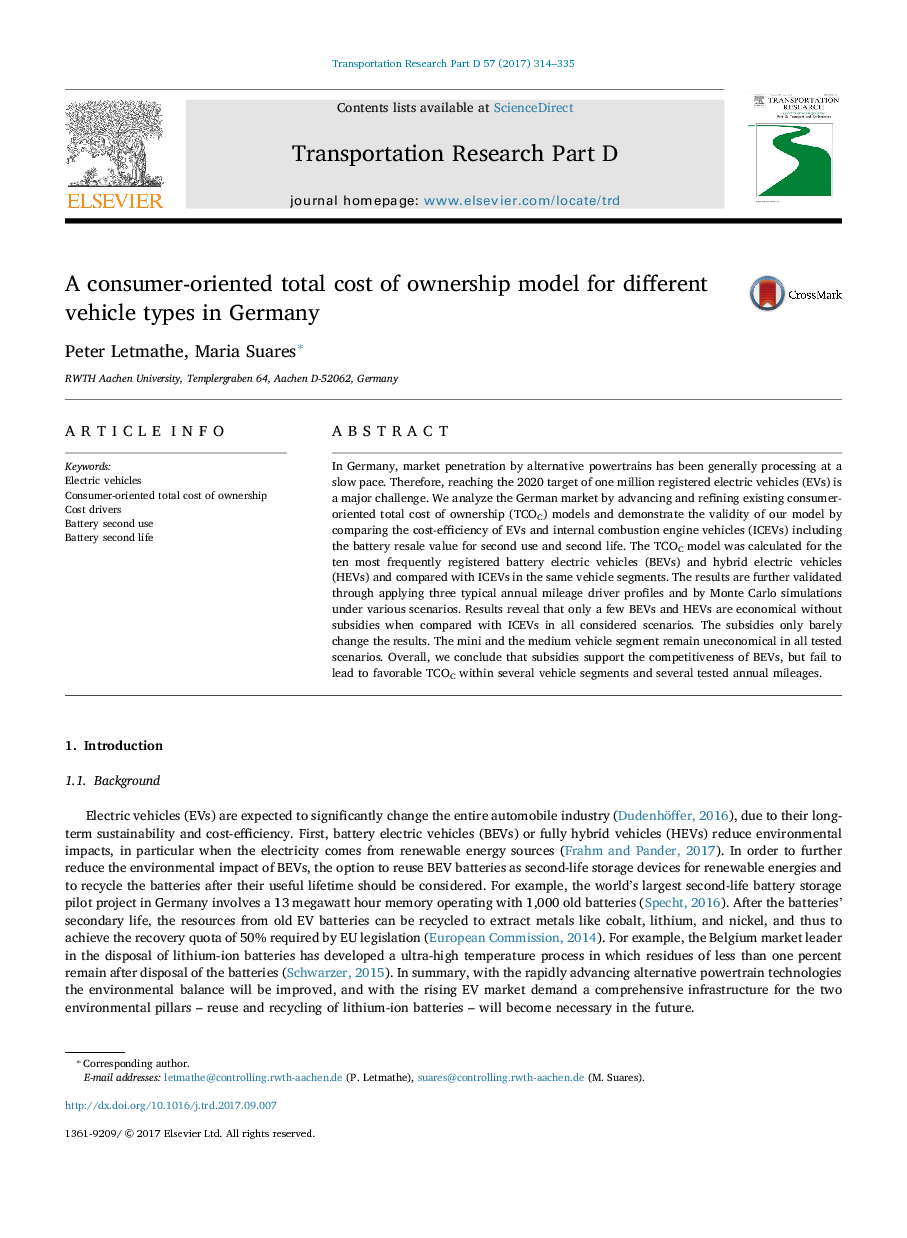ترجمه فارسی عنوان مقاله
هزینه کل هزینه مالکیت مدل مالکیت برای انواع خودروهای مختلف در آلمان
عنوان انگلیسی
A consumer-oriented total cost of ownership model for different vehicle types in Germany
| کد مقاله | سال انتشار | تعداد صفحات مقاله انگلیسی |
|---|---|---|
| 102073 | 2017 | 22 صفحه PDF |
منبع

Publisher : Elsevier - Science Direct (الزویر - ساینس دایرکت)
Journal : Transportation Research Part D: Transport and Environment, Volume 57, December 2017, Pages 314-335
ترجمه کلمات کلیدی
وسایل نقلیه الکتریکی، هزینه مصرف کننده گرا کل مالکیت، رانندگان هزینه، استفاده از باتری دوم، زندگی دوم باتری،
کلمات کلیدی انگلیسی
Electric vehicles; Consumer-oriented total cost of ownership; Cost drivers; Battery second use; Battery second life;

